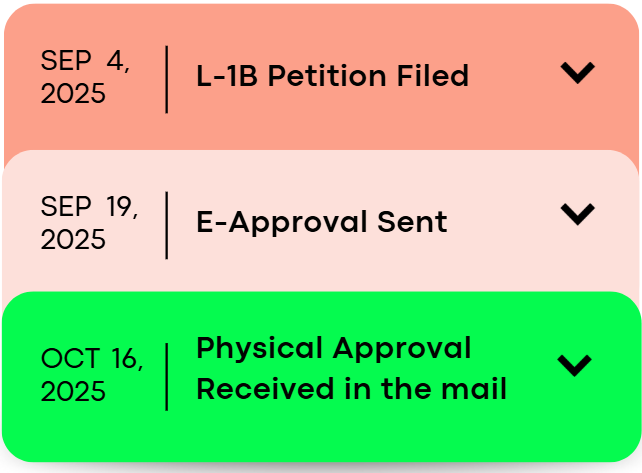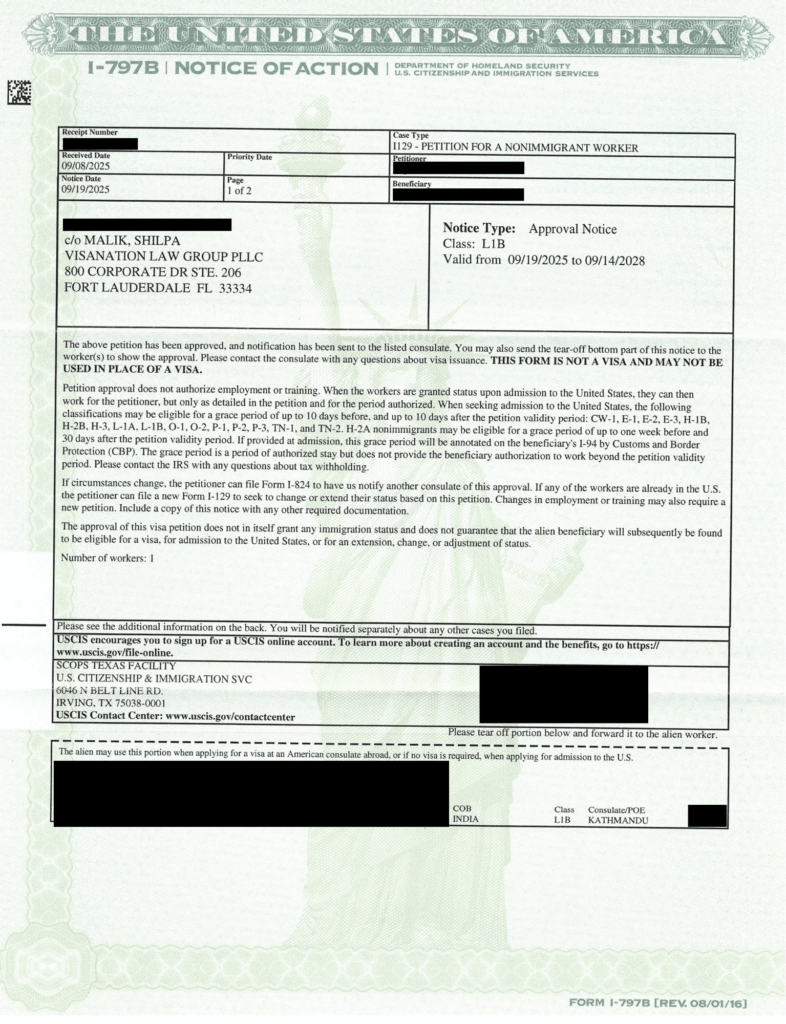Background
Our client, Hema, is an accomplished engineer specializing in substation protection and control systems. Her work revolved around updating and performing system studies to ensure that voltage systems were properly running. In simple terms, she is the person behind lighting plans and carrying out fault analysis to ensure that equipment is working properly. Hema was born in India, but she worked in Nepal for a branch of a U.S.-based engineering and manufacturing company. After some time, the company’s president wanted her to transfer to the United States for three years to serve as a Senior Substation Protection and Control Engineer.
Case
The company came to us and gave us a rundown of Hema and her resume. We decided that the best approach here would be to proceed with an L-1B, Intracompany Transferee Specialized Knowledge Visa.
L-1B Visa Requirements
To qualify for an L-1B position, the petitioner must show that:
- The beneficiary possesses specialized knowledge
- The position offered involves the specialized knowledge held by the beneficiary
- The beneficiary has at least one continuous year of employment abroad in a managerial, executive, or specialized knowledge capacity
Our team established that Hema met all the L-1 visa requirements. She had specialized knowledge of the company’s international markets, engineering processes, and operational procedures. The company’s core business focused on industrial engineering and construction management, with its Nepal branch responsible for engineering and manufacturing operations. They were the primary ones responsible for handling all project deliveries to U.S. clients.
Hema’s transfer was essential for project continuity and for providing expert consulting services to clients across the United States. Her deep understanding of substation engineering systems, developed through extensive hands-on experience and training in Nepal. This made Hema uniquely qualified for the role. Training a U.S.-based employee to reach her level of expertise would have required significant time and more money.
It’s important to note that establishing the relationship between the two companies is not enough. It was evident that the U.S. entity maintained direct oversight and authority over the foreign office, but it was critical to explain the foreign entity’s importance. We emphasized that employees in the Nepal branch held unique institutional knowledge of the company’s workflows, design platforms, and project systems. This same level of expertise was not in the U.S. office. The specialized knowledge formed the foundation of the petition and justified Hema’s temporary transfer to the U.S.
Verdict
Within 15 days, USCIS approved Hema’s L-1B petition! There were no RFEs or any delays with the case.

How VisaNation Helped
Filing an L-1B petition is far from simple. It requires detailed evidence, precise legal arguments, and a deep understanding of how USCIS interprets “specialized knowledge.” For our client, the success of the petition depended on presenting complex technical information within the world of industrial engineering. Our team worked to match the legal criteria for an L-1B petition with our client’s qualifications. Especially with the increased scrutiny that many employment-based petitions are receiving nowadays, you must consider having an attorney review your work. Most of the time, the key missing component is the persuasive legal narrative that checks off all the boxes with USCIS.
If you want to check your eligibility for an L-1B visa, contact our office!
